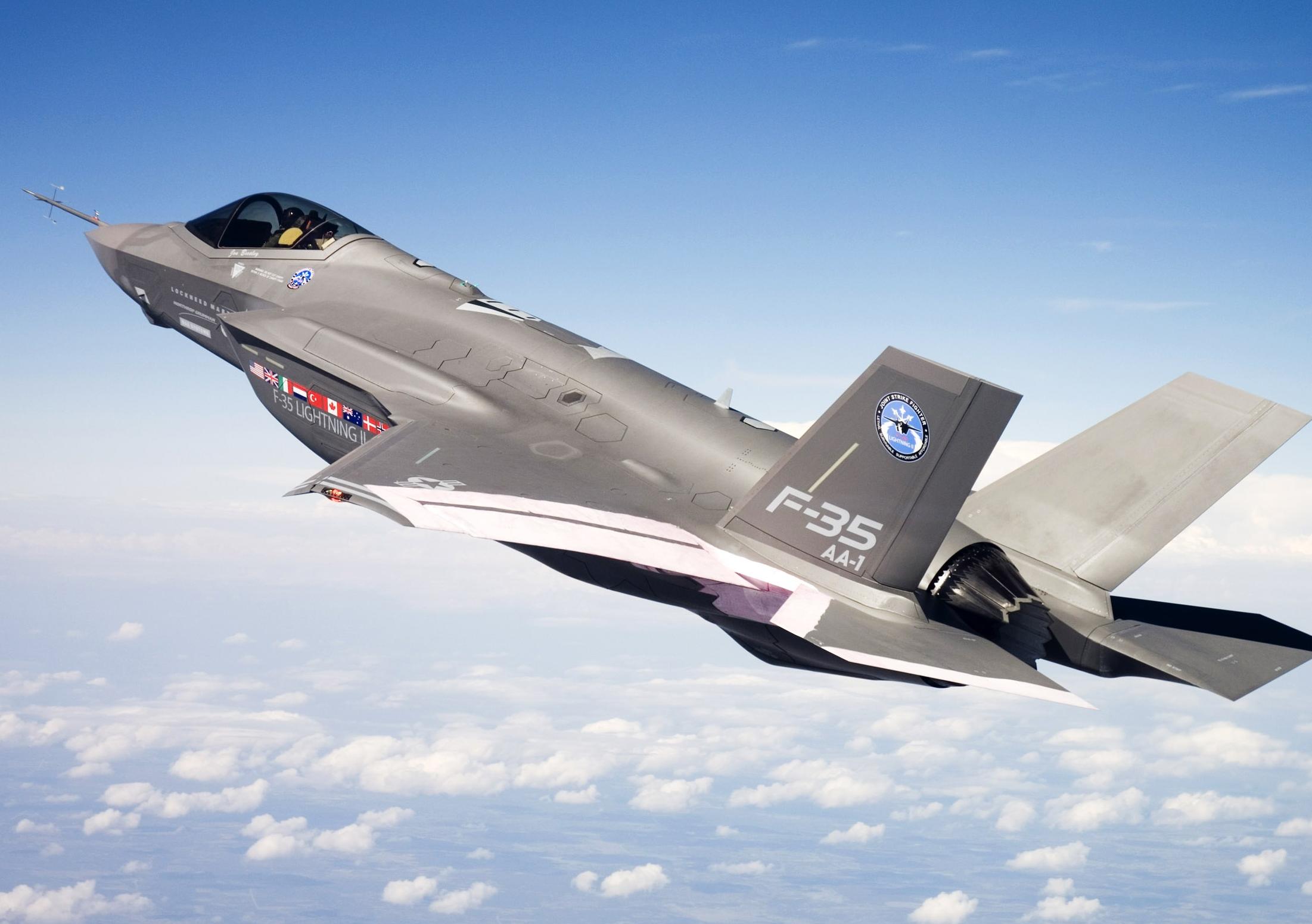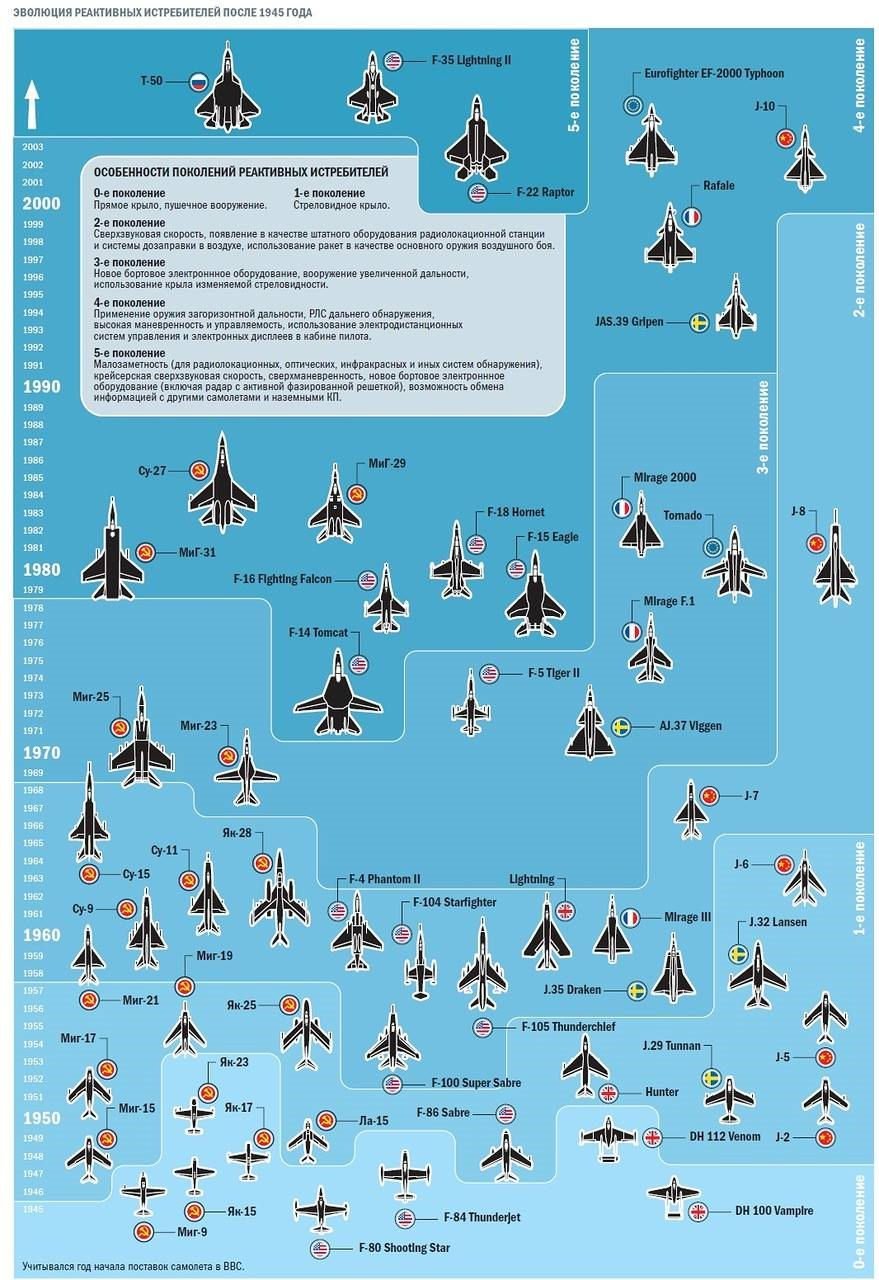Generations Of Fighter Jets - The fourth-generation fighter is a class of jet fighter in service from about 1980 to 1980 and repeats design concepts from the 1970s. The design of the fourth generation is largely influenced by the experiences of the previous generation of combat aircraft. Third-generation fighters are often designed primarily as interceptors, built around high-speed and air-to-air missiles. Although extremely fast in a straight line, many third-generation fighters were severely lacking in maneuverability, as doctrine held that traditional dogfighting would be impossible at supersonic speeds. In practice, the air-to-air missiles of the day, despite being responsible for the vast majority of air-to-air victories, were relatively unreliable and combat would quickly become subsonic at close range. This would leave third-generation fighters vulnerable and ill-equipped, which would revive interest in maneuverability for fourth-generation fighters. Meanwhile, the rising cost of military aircraft in general and the demonstrated success of aircraft such as the F-4 Phantom II led to the popularity of multirole combat aircraft in parallel with the progress that marked the so-called fourth generation.
During this period, controllability was improved by relaxed static stability, made possible by the introduction of fly-by-wire (FBW) flight control systems, which in turn was made possible by advances in digital computers and systems integration techniques. Replacing the analog avionics required for FBW operations became a fundamental requirement as older analog computer systems began to be replaced by digital flight control systems in the latter half of the 1980s.
Generations Of Fighter Jets

Further advances in microcomputers in the 1980s and 1990s enabled rapid avionics upgrades during the lifetime of these fighters, including system upgrades such as active electronically scanned array (AESA), digital avionics buses, and infrared search and track.
Belgium Selects F 35 As Next Generation Fighter Jet
Due to the dramatic expansion of the capabilities of these upgraded fighters and new designs in the 1990s that reflected these new capabilities, they became known as the 4.5 generation. This is intended to reflect the fighter class which is a fourth generation evolutionary upgrade that includes integrated avionics suites, advanced weaponry efforts to make the (mostly) conventionally designed aircraft less easily detectable and tracked in response to advanced missile and radar technology (see stealth technology) .
There are inherent design features of the airframe and include cloaking of the turbine blades and the use of advanced materials that sometimes absorb radar, but not the characteristic low-detection configurations of the latest aircraft, referred to as fifth-generation fighters or aircraft such as the Lockheed-Martin F-22 Raptor.
The US defines Generation 4.5 fighters as fourth generation jet fighters that have been upgraded with AESA radar, high capacity data link, improved avionics and "the ability to field current and reasonably foreseeable advanced weapons".
Chgdu J-10C, Mikoyan MiG-35, Eurofighter Typhoon, Dassault Rafale, Saab JAS 39 Grip, Boeing F/A-18E/F Super Hornet, Lockheed Martin F-16E/F/V Block 70 /72, McDonnell Douglas F- 15E/EX Strike Eagle/Eagle II, HAL Tejas MK1A,
The 1 Thing That Could Crush A Sixth Generation Stealth Fighter
While the leading fighters of the third generation (eg the F-4 and MiG-23) were designed as interceptors with only a secondary emphasis on maneuverability, interception was relegated to a secondary role in the fourth generation, with a renewed emphasis on close-range air combat and maneuverability. . While the trade-offs involved in fighter aircraft design are again moving in the direction of outer visual range (BVR), managing the evolving environment of multiple information streams in the modern battlespace and low visibility, possibly based on close combat maneuverability, the use of thrust vectoring provides a way to maintain it, especially at low speed.
Key advances contributing to increased maneuverability in the fourth generation include high thrust force, strong control surfaces and relaxed static stability (RSS), the latter made possible by computerized fly-by-wire stability enhancement. Air combat maneuvering also involves a large amount of energy management to maintain speed and altitude in rapidly changing flight conditions.
Early fourth-generation fighters such as the F-15 Eagle and F-14 Tomcat retained electromechanical flight hydraulics. One of the innovations on the fourth generation fighter jets is FBW, while the 4.5 generation introduced the AESA radar.

The Geral Dynamics YF-16, which probably evolved into the F-16 Fighting Falcon, was the world's first aircraft deliberately designed to be somewhat aerodynamically unstable. This technique, called RSS, was incorporated to further improve aircraft performance. Most aircraft are designed with positive static stability, which causes the aircraft to return to its original position after a disturbance. However, positive static stability, the ability to remain in one's current position, opposes the pilot's efforts to maneuver. However, an aircraft with negative static stability will, in the absence of control input, easily deviate from level and controlled flight. An unstable aircraft can therefore be more maneuverable. Such a 4th generation aircraft requires a computerized FBW flight control system (FLCS) to maintain the desired flight path.
F 35 Is Old: Meet The 7th Generation Fighter (it Could Change Everything)
Some late derivatives of the early types, such as the F-15SA Strike Eagle for Saudi Arabia, included an upgrade to FBW.
Thrust vectoring was originally introduced in the Hawker Siddeley Harrier for vertical take-off and landing, and pilots soon developed the technique of "viffing", or vectoring in forward flight, to improve maneuverability. The first fixed-wing type to demonstrate improved maneuverability in this way was the Sukhoi Su-27, the first aircraft to publicly demonstrate pitch vectoring. Combined with a thrust-to-weight ratio greater than unity, this allowed him to maintain close to zero airspeed at high angles of attack without stalling, performing novel stunts such as Pugachev's Cobra. The three-dimensional TVC nozzles on the Suho Su-30MKI are positioned 32° outward from the longitudinal axis (i.e. in the horizontal plane) and can be deflected ±15° in the vertical plane. This produces a corkscrew effect, which further increases the turning ability of the aircraft.
The MiG-35 with its thrust vectored RD-33OVT engines allows it to be the first twin-engine aircraft with thrust vectored jets that can move in two directions (i.e. 3D TVC). Other existing thrust vectoring aircraft, such as the F-22, have nozzles that vector in one direction.
The technology is adapted to the Sukhoi Su-47 Berkut and later derivatives. The US tried to adapt the technology to the F-16 and F-15, but did not introduce it until the fifth generation arrived.
Picture Of Third Generation Jets I Made
Sustaining supersonic speed without the use of afterburner saves large amounts of fuel, greatly increasing range and duration, but available gink power is limited and drag increases sharply in the transonic region, so drag-creating equipment such as external bearings and their attachment points must be minimized , preferably using internal storage.
The Eurofighter Typhoon can cruise at around Mach 1.2 without afterburn, with a maximum speed without reheat of Mach 1.5.
The EF T1 DA (Developmt Aircraft trainer version) demonstrated supercruise (1.21 M) with 2 SRAAMs, 4 MRAAMs and a tank (plus 1-ton flight test equipment, plus 700 kg more weight for the trainer version) during evaluation in Singapore.

Avionics can often be replaced as new technologies become available; they are often upgraded during the life of the aircraft. For example, the F-15C Eagle, first produced in 1978, received upgrades in 2007, such as an AESA radar and a common helmet-mounted tracking system, and is scheduled to receive the 2040C upgrade to be operational by 2040.
Air Force 6th Gen Aircraft Will Control Multiple Drones
The primary sensor of all modern fighters is radar. The US displayed its first modified F-15Cs equipped with AN/APG-63(V)2 AESA radars,
Which have no moving parts and can project a much tighter beam and scan faster. It was later introduced on the F/A-18E/F Super Hornet and Block 60 (export) F-16, and will also be used on future US fighters. France introduced its first indigenous AESA radar, the Thales-built RBE2-AESA in February 2012.
For use on the Rafale. The RBE2-AESA can also be retrofitted to the Mirage 2000. The European GTDAR consortium is developing the Euroradar CAPTOR AESA radar for future use on the Typhoon. For the next-generation F-22 and F-35, the US will use a low-probability interception capability. This will spread the energy of the radar pulse over multiple frequencies, so as not to activate the radar warning receivers that all aircraft have.
In response to the increasing US emphasis on radar-evading stealth designs, Russia has turned to alternative systems with an emphasis on IRST systems, first introduced on US F-101 Voodoo and F-102 Delta Dagger fighters in the 1960s, to detect and tracking targets in the air. They measure IR radiation from targets. As a passive Ssor, it has a limited range and does not contain inherent information about the position and direction of the target - these must be derived from captured images. To compensate for this, IRST systems can incorporate a laser range finder to provide complete fire control solutions for cannon fire or missile launches. Using this method, German MiG-29s using IRST helmet display systems were able to obtain missile lock with greater effectiveness than USAF F-16s in war exercises. IRST ssors have now become standard on Russian aircraft. With the exception of the F-14D (officially retired in September 2006), no 4th generation Western fighter has built-in IRST sensors for air-to-air detection, although a similar FLIR is often used to detect targets on the ground.
Uk, Italy And Japan Team Up To Build A 6th Generation Fighter Called Tempest By 2035
A computer function of great tactical importance is the data link. All modern European and American aircraft are capable of sharing targeting data with allied fighters and AWACS aircraft (see JTIDS). The Russian MiG-31 interceptor also has some data links
Second degree assault washington state, 2nd degree assault sentence, 2nd degree aggravated assault, 2nd degree assault mn, 2nd degree assault, 2nd degree assault definition, 3rd degree assault washington state, 4th degree assault washington state, 2nd degree felony assault, 4th degree assault washington, what is assault 2nd degree, 2nd degree assault charges